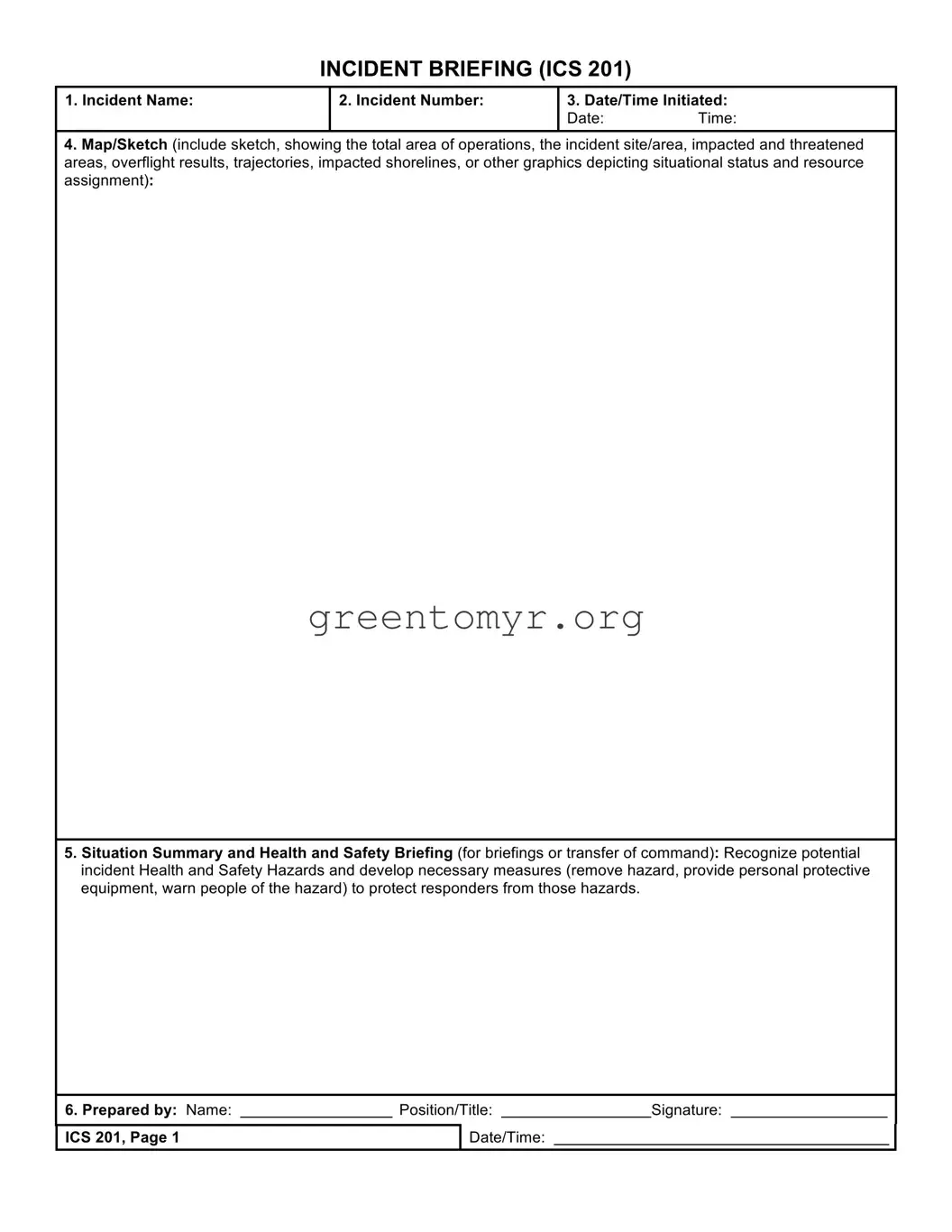The ICS 201 form, also known as the Incident Briefing, serves as a foundational document for incident response management. It provides crucial information regarding the current situation of an incident, the resources allocated, and the planned actions. The form is essential for communicating updates to an incoming Incident Commander and various team members involved in managing the incident.
The ICS 201 form should be completed at the beginning of an incident when the situation is first recognized. It can also be updated as needed throughout the incident to reflect changes in strategy, objectives, and resource status. Proper timing ensures that all team members have the latest information and understand their roles in response efforts.
The form is typically prepared by the Incident Commander. This individual is tasked with gathering relevant information about the incident, including details on actions taken, resources deployed, and any health and safety concerns. The completed form is then shared with team members and incoming Command Staff.
The ICS 201 form includes the following key information:
-
Incident Name and Number
-
Date and time the incident was initiated
-
Map or sketch illustrating the operational area
-
Situation summary and health and safety briefing
-
Current and planned objectives
-
Current organization of the response team
-
Resource summary detailing who has arrived and their assignments
To create an effective map or sketch, include the total area of operations and highlight key incident features such as impacted areas, facilities, and resource assignments. Use commonly accepted mapping symbols and ensure that North is oriented at the top of the page or clearly indicated otherwise. If necessary, attach additional maps for clarity.
If you find that you need additional space while filling out the form, you can use blank ICS 201 pages. Simply repaginate as needed to maintain a coherent document. This allows for comprehensive coverage of all necessary details without crowding the existing pages.
Once the ICS 201 form is prepared, it should be duplicated and distributed to the relevant personnel before the initial briefing. Essential sections are divided among different units; for instance, the “Map/Sketch” section goes to the Situation Unit, while the “Current Organization” and “Resource Summary” go to the Resources Unit. This systematic distribution ensures that everyone has the pertinent information required for effective response.
Yes, the ICS 201 form can be included as part of the initial Incident Action Plan (IAP). Its structured information can assist in establishing a clear understanding of the situation, guiding the actions and strategies planned for the incident. This integration helps in aligning all responders on common objectives.






